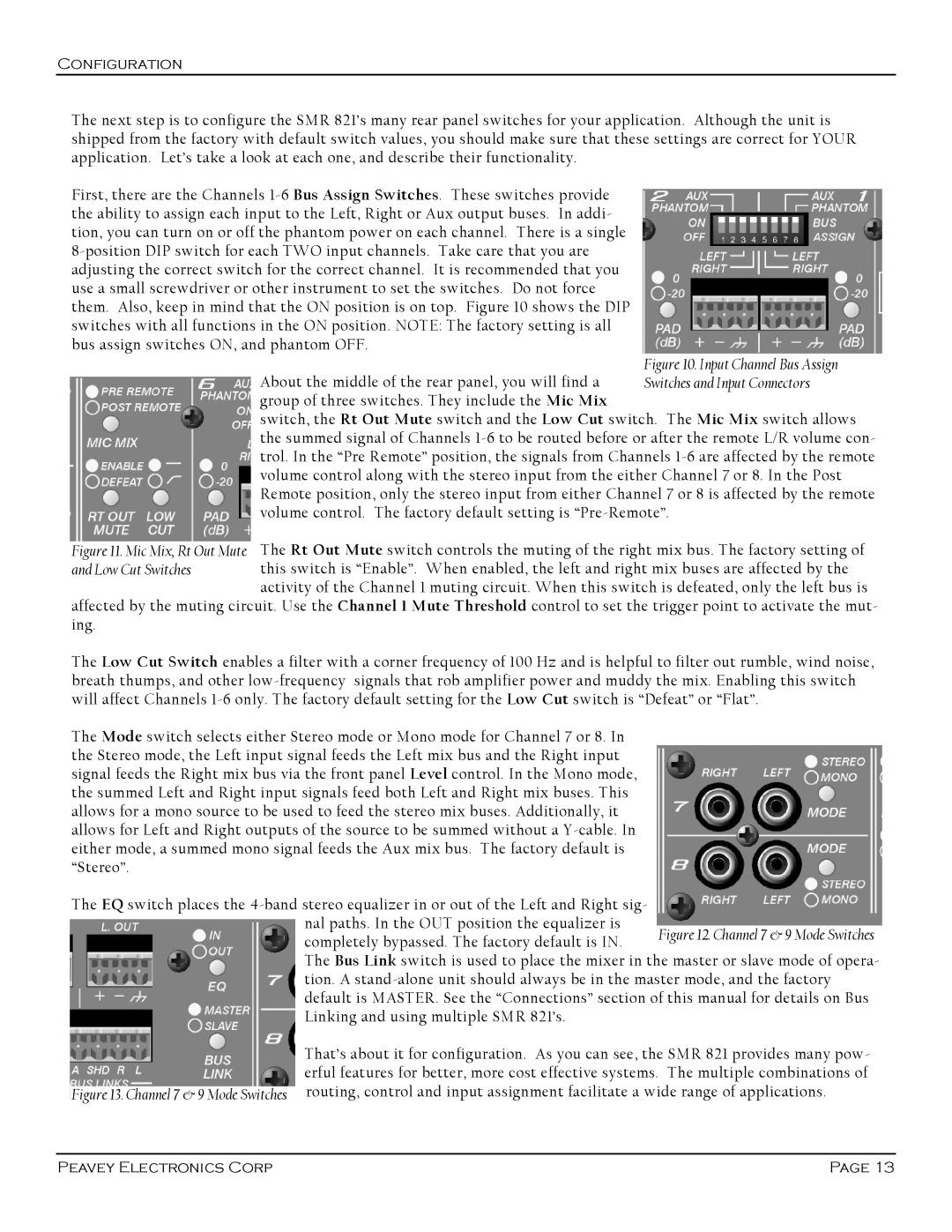
Configuration
The next step is to configure the SMR 821’s many rear panel switches for your application. Although the unit is shipped from the factory with default switch values, you should make sure that these settings are correct for YOUR application. Let’s take a look at each one, and describe their functionality.
First, there are the Channels
About the middle of the rear panel, you will find a group of three switches. They include the Mic Mix
switch, the Rt Out Mute switch and the Low Cut switch. The Mic Mix switch allows the summed signal of Channels
Figure 11. Mic Mix, Rt Out Mute The Rt Out Mute switch controls the muting of the right mix bus. The factory setting of
and Low Cut Switchesthis switch is “Enable”. When enabled, the left and right mix buses are affected by the activity of the Channel 1 muting circuit. When this switch is defeated, only the left bus is
affected by the muting circuit. Use the Channel 1 Mute Threshold control to set the trigger point to activate the mut- ing.
The Low Cut Switch enables a filter with a corner frequency of 100 Hz and is helpful to filter out rumble, wind noise, breath thumps, and other low-frequency signals that rob amplifier power and muddy the mix. Enabling this switch will affect Channels 1-6 only. The factory default setting for the Low Cut switch is “Defeat” or “Flat”.
The Mode switch selects either Stereo mode or Mono mode for Channel 7 or 8. In the Stereo mode, the Left input signal feeds the Left mix bus and the Right input signal feeds the Right mix bus via the front panel Level control. In the Mono mode, the summed Left and Right input signals feed both Left and Right mix buses. This allows for a mono source to be used to feed the stereo mix buses. Additionally, it allows for Left and Right outputs of the source to be summed without a Y-cable. In either mode, a summed mono signal feeds the Aux mix bus. The factory default is “Stereo”.
The EQ switch places the 4-band stereo equalizer in or out of the Left and Right sig- nal paths. In the OUT position the equalizer is completely bypassed. The factory default is IN.
The Bus Link switch is used to place the mixer in the master or slave mode of opera- tion. A stand-alone unit should always be in the master mode, and the factory default is MASTER. See the “Connections” section of this manual for details on Bus Linking and using multiple SMR 821’s.
That’s about it for configuration. As you can see, the SMR 821 provides many pow- erful features for better, more cost effective systems. The multiple combinations of
Figure 13. Channel 7 & 9 Mode Switches routing, control and input assignment facilitate a wide range of applications.
Peavey Electronics Corp | Page 13 |
